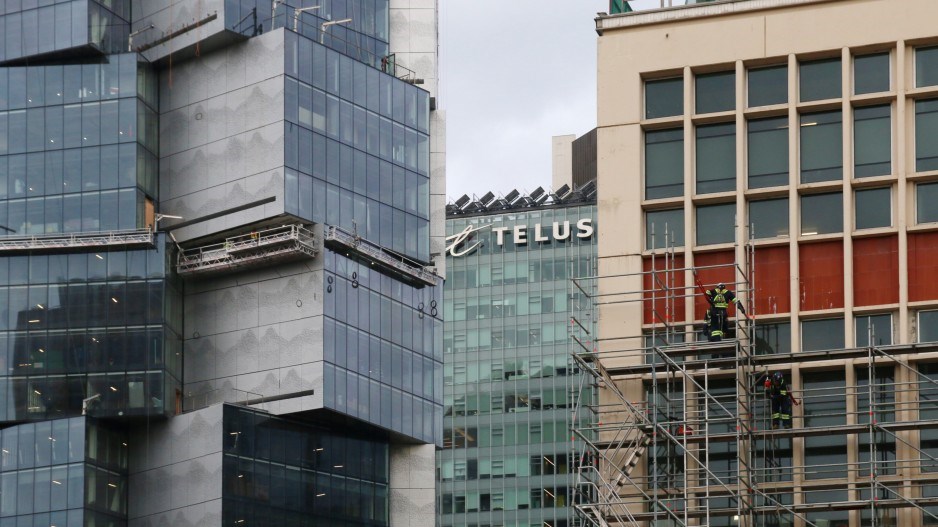For all its promise of increased speed, reliability and greater interconnectivity, 5G may not be quite living up to its billing, depending on the provider, the smartphone and where a customer lives in Canada.
In the case of Telus (TSX:T), users on discussion forums such as Reddit have expressed disappointment after getting 5G smartphones, only to experience high latency, buffering and generally slow download and uploads speeds—the exact opposite of what 5G was supposed to deliver.
Geeks and gamers on Reddit note that, in the past, Telus consistently earned high scores with previous generations of wireless networks—like 4G LTE—compared to peer telecoms like Rogers (TSX:RCI-B) and Bell (TSX:BCE).
That performance appears to have seriously deteriorated in 2024 with newer generation 5G tech.
Users speculate that may have something to do with the fact the Canadian government banned telecoms from using Huawei equipment in 2022 over national security concerns, forcing Telus to remove some Huawei equipment and start over with other equipment providers, like Ericsson, Nokia and Samsung.
According to Telus’ most recent management and discussion analysis, its 5G network now covers approximately 87 per cent of Canada’s population.
Opensignal, which assesses mobile and Internet performance, still gives Telus high marks in terms of gaming experience over 5G networks, though it is no longer in the top spot that it occupied in previous ratings of 4G.
In its most recent 5G experience report, Opensignal puts Telus and Bell as joint winners of the 5G gaming experience category, whereas Rogers takes the top spot for 5G video experience. By contrast, in 2019, Telus won four out of five awards for its 4G experience, and tied for a fifth.
Initially, when Telus began exploring 5G, it used Huawei equipment. In 2017, it completed a 5G trial through the Telus-Huawei 5G Living Lab in Vancouver.
In 2018, the Canadian government came under pressure to ban Huawei from its 5G networks—something Telus CEO Darren Entwistle warned could have financial implications for Telus.
“Depending on the scope of a government decision, including the potential supplier ban, we may see incremental non-recurring financial cost that we will manage adeptly,” Entwistle said in a fourth-quarter investor conference call in 2018. “It's important to note that we would also risk diluting Canada's global leadership and wireless network performance and excellence, owing to a concentrated supply chain if that eventuality comes to fruition.”
Despite its objections to the proposed Huawei ban, Telus decided in 2020 to go with other equipment providers for its 5G buildout.
In 2022, the federal government officially forbade Canadian telecoms from using China’s Huawei or ZTE equipment for 5G.
Whether this might explain the poorer performance experienced by some users is unclear.
Telus provided the following statement in response to questions from BIV: “We have partnered with Nokia, Ericsson and Samsung for our 5G build, which reflects the multi-vendor approach we have always used to provide the best network experience for our customers. We remain and have always been compliant with current Canadian regulations, laws and cybersecurity requirements.”
A variety of factors could contribute to poor performance. A mobile network, after all, is a bit like a water system: You can install new high-performance pumps, but if the pipes feeding into it are too small, or leaking, or if there are too may users turning on taps at the same time, it doesn’t matter how skookum the pumps are—they will not function optimally.
One of the issues that can affect the performance of a given network is spectrum—the radio frequencies dedicated to broadcasters and telecoms. There is a finite supply of spectrum, which is why companies will spend billions of dollars acquiring it whenever it becomes available for auction.
The 3.5 gigahertz band is critical to 5G, and if telecoms can’t secure enough bandwidth, 5G networks may not operate optimally. One year ago, Telus acquired 72 megahertz of the 3,800 megahertz (3.8 gigahertz) spectrum in auction, bringing its total to 100 megahertz of “prime 5G mid-band spectrum nationally.”
The higher-frequency bands on which 5G operates have higher data rates, but shorter ranges. This requires denser concentration of equipment like small cells and antennae. Even when the new infrastructure is built out, there can be issues with interoperability with legacy network infrastructure, and if a carrier succeeds in adding a lot of customers in a given area, it can result in congestion issues.
On the broader scale, Canada overall ranks 18th out of 56 countries in 5G performance rankings, according to Opensignal.
“This ranking reflects Canada’s steady progress in deploying 5G infrastructure,” Opensignal says. “However, it also highlights areas where challenges remain, particularly in achieving speeds comparable to global leaders.”
Opensignal noted that a significant challenge is the delay in allocating sufficient spectrum, which in turn affects operators’ ability to deliver higher speeds to customers.




